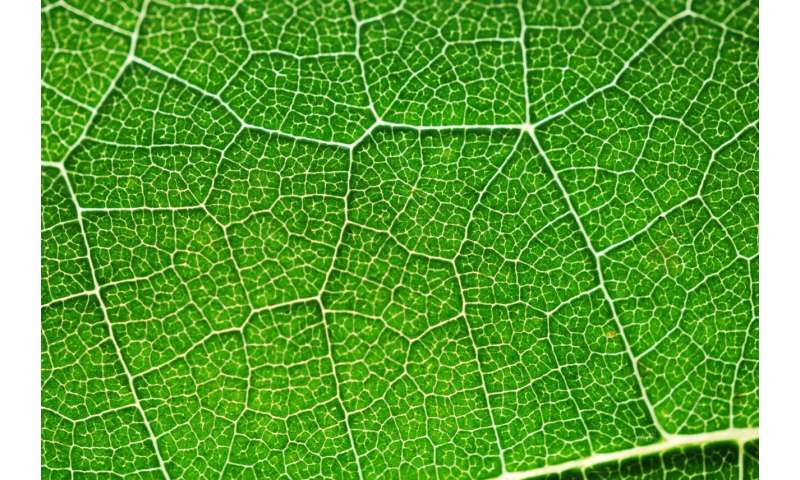
Global economic growth comes with increasing demand for energy, but stepping up energy production can be challenging. Recently, scientists have achieved record efficiency for solar-to-fuel conversion, and now they want to incorporate the machinery of photosynthesis to push it further. The researchers will present their results today at the American Chemical Society (ACS) Fall 2020 Virtual Meeting & Expo.
"We want to fabricate a photocatalytic system that uses sunlight to drive chemical reactions of environmental importance," says Lilac Amirav, Ph.D., the project's principal investigator.
Specifically, her group at the Israel Institute of Technology is designing a photocatalyst that can break down water into hydrogen fuel. "When we place our rod-shaped nanoparticles in water and shine light on them, they generate positive and negative electric charges," Amirav says. "The water molecules break; the negative charges produce hydrogen (reduction), and the positive charges produce oxygen (oxidation). The two reactions, involving the positive and negative charges, must take place simultaneously. Without taking advantage of the positive charges, the negative charges cannot be routed to produce the desired hydrogen."
If the positive and negative charges, which are attracted to one another, manage to recombine, they cancel each other, and the energy is lost. So, to make sure the charges are far enough apart, the team has built unique heterostructures comprised of a combination of different semiconductors, together with metal and metal oxide catalysts. Using a model system, they studied the reduction and oxidation reactions separately and altered the heterostructure to optimize fuel production.
In 2016, the team designed a heterostructure with a spherical cadmium-selenide quantum dot embedded within a rod-shaped piece of cadmium sulfide. A platinum metallic particle was located at the tip. The cadmium-selenide particle attracted positive charges, while negative charges accumulated on the tip. "By adjusting the size of the quantum dot and the length of the rod, as well as other parameters, we achieved 100% conversion of sunlight to hydrogen from water reduction," Amirav says. A single photocatalyst nanoparticle can produce 360,000 molecules of hydrogen per hour, she notes.
The group published their results in the ACS journal Nano Letters. But in these experiments, they studied only half of the reaction (the reduction). For proper function, the photocatalytic system must support both reduction and oxidation reactions. "We were not converting solar energy into fuel yet," Amirav says. "We still needed an oxidation reaction that would continually provide electrons to the quantum dot." The water oxidation reaction occurs in a multi-step process, and as a result remains a significant challenge. In addition, its byproducts seem to compromise the stability of the semiconductor.
Together with collaborators, the group explored a new approach—looking for different compounds that could be oxidized in lieu of water—which led them to benzylamine. The researchers found that they could produce hydrogen from water, while simultaneously transforming benzylamine to benzaldehyde. "With this research, we have transformed the process from photocatalysis to photosynthesis, that is, genuine conversion of solar energy into fuel," Amirav says. The photocatalytic system performs true conversion of solar power into storable chemical bonds, with a maximum of 4.2% solar-to-chemical energy conversion efficiency. "This figure establishes a new world record in the field of photocatalysis, and doubles the previous record," she notes. "The U.S. Department of Energy defined 5-10% as the 'practical feasibility threshold' for generating hydrogen through photocatalysis. Hence, we are on the doorstep of economically viable solar-to-hydrogen conversion."
These impressive results have motivated the researchers to see if there are other compounds with high solar-to-chemical conversions. To do so, the team is using artificial intelligence. Through a collaboration, the researchers are developing an algorithm to search chemical structures for an ideal fuel-producing compound. In addition, they are investigating ways to improve their photosystem, and one way might be to draw inspiration from nature. A protein complex in plant cell membranes that comprises the electrical circuitry of photosynthesis was successfully combined with nanoparticles. Amirav says that this artificial system so far has proven fruitful, supporting water oxidation while providing photocurrent than is 100 times larger than that produced by other similar systems.
Abstract
The solar-driven photocatalytic splitting of water into hydrogen and oxygen is a potential source of clean and renewable fuel. However, four decades of global research have proven this multi-step reaction to be highly challenging. Here, I will present our strategies, and most recent results, in taking photocatalyst production to new and unexplored frontiers, while exploring solar to chemical conversion that goes beyond water splitting. I will focus on unique design of innovative nano scale particles, which harness nano phenomena for improved activity, and methodologies for the construction of sophisticated heterostructures. I will share our design rules and accumulated insights, which enabled us to demonstrate efficient, and stable, full-cycle endothermic redox transformations, realizing a genuine solar-to-fuel energy conversion, with state of the art efficiencies of up to 4.2%.
Citation: Converting solar energy to hydrogen fuel, with help from photosynthesis (2020, August 17) retrieved 17 August 2020 from https://ift.tt/3kULNTB
This document is subject to copyright. Apart from any fair dealing for the purpose of private study or research, no part may be reproduced without the written permission. The content is provided for information purposes only.
"fuel" - Google News
August 17, 2020 at 04:22PM
https://ift.tt/3kULNTB
Converting solar energy to hydrogen fuel, with help from photosynthesis - Phys.org
"fuel" - Google News
https://ift.tt/2WjmVcZ
Bagikan Berita Ini















0 Response to "Converting solar energy to hydrogen fuel, with help from photosynthesis - Phys.org"
Post a Comment